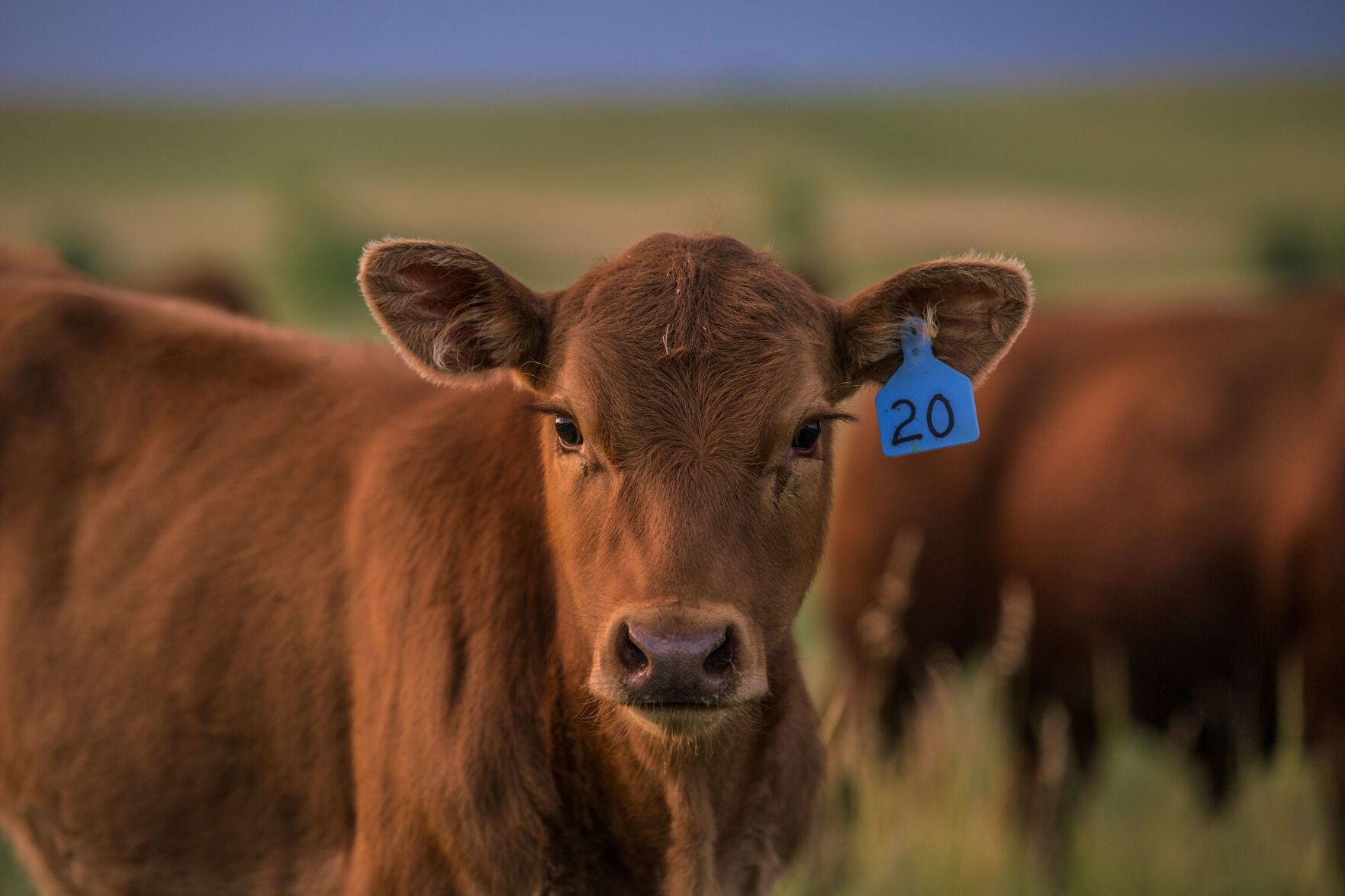A lengthy drought that impacted the beef supply chain in 2022 is going to have its fingers on cow-calf producers and feeders in 2023, according to Lance Zimmerman, a senior beef analyst at RaboResearch Food and Agribusiness team.
Globally protein supplies are trending upward, he said. The beef side of the balance sheet will be steady at best with U.S. ranchers making adjustments to their cowherds because of reduced pasture and forage.
“From a supply standpoint, when you look at what’s happening with the U.S. beef production system, it’s simply a matter of having an overdue bill in terms of cattle numbers contraction,” he said.
Black swan events at the Tyson plant in Holcomb, Kansas, in 2019, were followed by the economic shutdown the COVID-19 pandemic in 2020. Then in 2021 and early 2022, the industry was able to get back on track, he said.
“Then the drought doubled down. Everything got sped up because we ran out of resources at the pasture level,” Zimmerman said.
Backgrounders and feedlots were also affected, as they had less feed to finish. Ranchers are moving cattle much quicker to the feeders and ultimately processing plants.
“Flip the script to 2023 and not just is the fed slaughter going to be lower to the tune of probably 1 million head, but you’re also going to have a reduction in cow slaughter as well, declining 400,000 head or more,” Zimmerman said. “As you round that up, you’re going to have nearly a 1.5 million head reduction in cattle slaughter.”
He projects beef production will be down 4% year over year, and analysts project Brazil and Australia to have an increase in production. Mexico is likely to have a smaller increase but all those three countries will not make up for the loss in U.S. production, he said.
From a demand standpoint, it is always based on retail dollars. “What we all fight for downstream—from retail and food service—create the pie so to speak,” he said.
The retailer, restaurant operator, distributor, packer, feeder and cow-calf producer are all fighting for one slice of the pie, which means the larger the pie more money is available for each sector, he said.
While prices in 2022 were not at the record highs, they were within 20 to 25 cents a pound of the previous high set in fall 2021.
The poultry and pork industry both faced unique production challenges in the first half of the year, he said.
Combined with the strong demand for protein, those factors helped push up beef prices but the story started to change in the second half of the year.
“We got to the second half of the year and things started changing for all three (protein producers),” Zimmerman said. “Chicken breasts really came off their earlier highs and pork prices normalized. These prices were considerably softer on the aggregate, even while retail meat and poultry prices tended to hold a little more steady.”
Retail shoppers, in the face of increasing inflation that has upped all of their costs, are making adjustments in their budgets and buying less expensive cuts of beef, and he sees that continuing in 2023. That translates into a 1- to 2-pound reduction per person, and that will be enough to soften demand some. With tighter supplies, it will continue to keep retail prices higher and he expects wholesale beef prices to hold.
Grain price impact
Rabobank’s analysis showed global grain and oilseed prices nearly doubled from May 2020 to May 2022 due to strong demand, supply concerns and geopolitical uncertainty mostly tied to Russia’s ongoing invasion of Ukraine. With a lingering drought and uncertainty in the Black Sea, Rabobank analysts believe those prices will remain relatively high in 2023.
Zimmerman believes those factors will continue to limit margins for producers. Those producers who depend on feed grains will also be impacted by higher energy costs that have escalated fuel and fertilizer costs. Packers and processors will also feel the pinch and that will decline their purchasing power.
In addition, costs that crept up in 2022 associated with borrowing, shipping and labor are expected to remain a part of the 2023 equation.
The boxed beef cutout averaged $265 per hundredweight in 2022, and Zimmerman expects it to be about $270 in 2023. Fed steer prices told a similar story. After averaging $144 this year, he projects them to be $159 per hundredweight in 2023. How it all impacts cow-calf producers remains variable as they have had to adjust herd size as a result of drought
“If we weren’t in an environment where feed prices were still incredibly high the drought would still likely play out and still be a major factor in these markets all the way through next year to a certain extent. I think you could see more optimism and more bullishness, perhaps, in those calf feeder cattle markets.”
That optimism is offset by the uncertainty of a drought that has impacted corn and other feed supplies or forage in a pasture has left “a little bit of a dark cloud” in the industry.
Each year adds a new chapter in beef production because when it comes to trends of expansion and liquidation, it has the tails that can drag out for quite a while. Even if there is a 400,000 head reduction in 2023, the cow slaughter numbers are still likely to equate to a culling range above 12%, compared to 13.4% in 2022. A return to below 11% is when the market is signaling a stabilization in numbers.
Ranchers were also selling heifers as they culled herd size and it will take time to restore that stock, he said.
“As we look at the data, our expectation is that we’re probably not going to be able to use the word expansion in our vocabulary until we get into 2024 and probably the second half of 2024 at best,” Zimmerman said, adding it means the first full calendar year of expansion would not occur until 2025 or 2026 at the earliest.
Processing expansion
Beef has taken note of the expansion of pork and poultry plants and that has helped those sectors to be able to react quicker to market forces. Several beef plants have announced plans to add capacity and Zimmerman said ranchers should be encouraged by new plants planned for North Platte, Nebraska; Amarillo, Texas; and near St. Louis, Missouri. Those facilities in the long range should strengthen all beef sectors including with competitive prices. It also means more opportunities to export beef.
Advice to ranchers
Zimmerman, who grew up on a Kansas family farm, says producers should heed the tried-and-true advice of reviewing expenses and making sure capital expenditures fit their needs.
If a cow-calf producer has 500 head or fewer and the long-term return is $100 a head, that means about $50,000 a year in income and would be tough to support a household of four people, Zimmerman said. Regardless of whether it is a cattle feeding, stocker-grower, backgrounder or cow-calf operation, the producer must closely look at every dollar spent. As calf prices go up there is a desire to expand but it must be met with a realistic bottom line.
“Every penny we spend needs to have a revenue expectation assigned to it,” he said. “If you’re going to spend $6,000 on a bull, I think that’s fine as long as you recognize what the bull brings to your breeding program to add value to the calf crop on the back side.”
The expectation should be instead of getting three to four breedings from the bull, he should provide six to seven breedings.
Today’s producers have software programs, as an example, to help track expenses.
“The volatility has increased so make sure you arm yourself with risk management tools,” he said.
Ten years ago future markets could help some ranchers, but today the U.S. Department of Agriculture offers a risk management program that can benefit smaller operators. Also, there are forage and rangeland insurance programs that can mitigate risk.
Dave Bergmeier can be reached at 620-227-1822 or [email protected].


